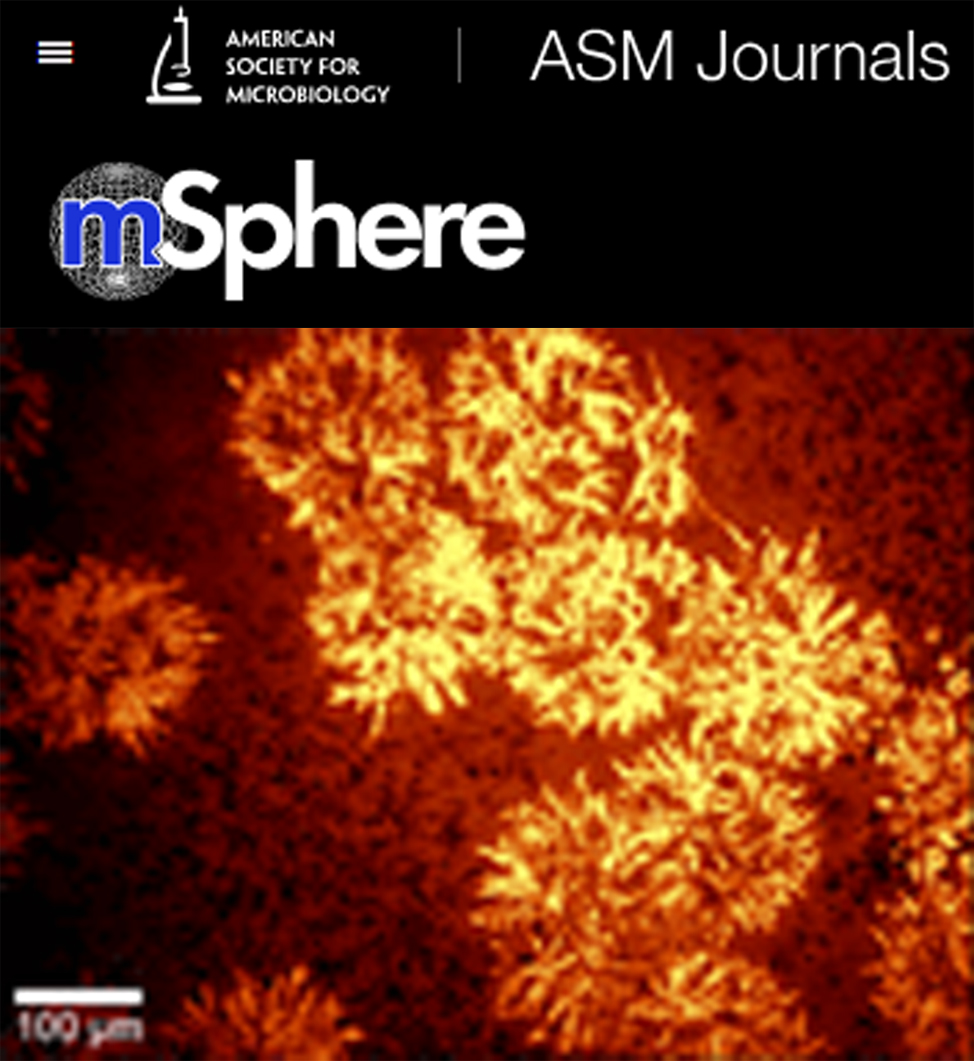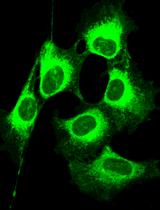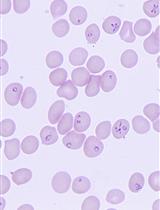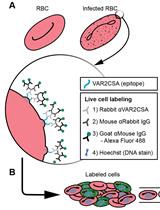- EN - English
- CN - 中文
Sex-specific Separation of Plasmodium falciparum Gametocyte Populations
恶性疟原虫配子细胞群体的性别特异性分离
发布: 2021年06月05日第11卷第11期 DOI: 10.21769/BioProtoc.4045 浏览次数: 3782
评审: Alessandro DidonnaDhaneswar PrustyKarolina Subrtova
Abstract
Plasmodium falciparum is a unicellular eukaryotic parasite that causes malaria in humans. The parasite is spread by Anopheles mosquitoes after ingestion of sexual stage parasites known as gametocytes. Malaria transmission depends on parasites switching from the disease-causing asexual blood forms to male and female gametocytes. The current protocol allows the simultaneous isolation of male and female parasites from the same population to study this critical lifecycle stage in a sex-specific manner. We have generated a transgenic P. falciparum cell line that expresses a GFP-tagged parasite protein in female, but not male, parasites. Gametocyte production is stress induced and, through a series of steps, sexual stage parasites are enriched relative to uninfected red blood cells or red blood cells infected with asexual stage parasites. Finally, male and female gametocytes are separated by fluorescence-activated cell sorting. This protocol allows for the separation of up to 12 million live male and female parasites from the same population, which are amenable to further analysis.
Keywords: Plasmodium falciparum (恶性疟原虫)Background
Malaria is still one of the most important infectious diseases of humankind. Each year more than 200 million cases of malaria are reported globally, resulting in over 400,000 deaths (World Health Organization, 2019). The disease is caused by protozoan parasites of the genus Plasmodium, and P. falciparum causes the most severe disease in humans. The parasite is spread between human hosts by Anopheles mosquitoes. Male and female gametocytes (sexual blood stage parasites) are key to the transmission of malaria because only these forms can survive ingestion by the mosquito vector to complete the parasite lifecycle. Hence, understanding the biological makeup of gametocytes holds great promise to identify transmission-blocking intervention strategies.
The analysis of sexual Plasmodium stages in the laboratory poses particular challenges: only a small subset of parasites converts into sexual forms; triggers for gametocyte commitment are numerous but poorly defined; complete development of the sexual stages takes 10-12 days; and the sex ratio is female-biased (3-5:1), meaning studies on total gametocytes tend to overlook the contribution of male parasites (e.g., omics approaches or drug susceptibility studies).
Although male and female parasites can be distinguished by subtle morphological features, the enrichment of sex-specific gametocyte populations remains challenging. Previously, separate cell lines were used to obtain either male or female populations. For example, the proteome of a non-male-gametocyte-producing strain was compared to that of combined male and female gametocytes to predict the sex-specific proteome (Tao et al., 2014). Lasonder et al. (2016) later generated two independent transgenic cell lines, one with a male-specific marker (dynein heavy chain) and the other with a female-specific marker (P47), to determine the sex-specific proteome experimentally. However, when the authors introduced both tags into the same cell line, a substantial subset of the population expressed both tags, revealing that the markers were not sex-specific. Miao et al. (2017) took advantage of alpha-tubulin II (differentially expressed between sexes) to determine another sex-specific proteome. Although each of these studies contributed information on the sex-specific molecular makeup of the parasites, a more reliable and sensitive method for distinguishing male and female gametocytes could accelerate sex-specific gametocyte research.
We previously discovered a protein that is only expressed in female gametocytes (Tran et al., 2014). This molecule belongs to the ATP-binding cassette transporter family (ABCG2) and locates to a single round uncharacterized organelle in the female parasite. This protocol uses a cell line that expresses a chimeric protein consisting of gABCG2 and green fluorescent protein as a female-specific marker.
The method presented here has the advantage of sorting gametocytes from the same population, allowing for paired analysis of male and female gametocytes. The method is not only suitable for sex-specific omics approaches, but is also compatible with live-cell analysis, such as testing sex-specific drug susceptibility.
Materials and Reagents
Sterile blunt end 22G needles (e.g., Livingstone, catalog number: DN22GX1.25B)
25 and 75 cm2 cell culture flasks (Corning, catalog numbers: 430168 and 430720)
175 cm2 cell culture flasks (Sarstedt, catalog number: 83.3912)
Microscope slides (Hurst Scientific, catalog number: WGDFCE90)
15 and 50 ml centrifuge tubes (Corning, catalog numbers: 430791 and 430829)
Disposable 500 ml bottle-top vacuum filters (Corning, catalog number: 431118) and sterile collection bottles
General plastic consumables (serological pipettes, aspiration pipettes, 1.7 ml microcentrifuge tubes, 20 ml syringes, pipette tips; Sarstedt or Corning)
Fresh (less than 10 days old) human red blood cells (RBCs), blood type O+ (Australian Red Cross Lifeblood)
Heat-inactivated human serum pooled from at least 5 donors of the same blood type (Australian Red Cross Lifeblood)
Plasmodium falciparum 3D7-gABCG2-GFP; P. falciparum 3D7 strain parasites expressing a GFP-tagged gametocyte ATP-binding cassette transporter family member 2 (gABCG2) protein (PlasmoDB accession no. PF3D7_1426500) (Tran et al., 2014)
RPMI 1640 Medium, GlutaMAXTM Supplement, HEPES (Thermo Fisher Scientific, GibcoTM, catalog number: 72400120)
Gentamicin 10 mg/ml (Thermo Fisher Scientific, GibcoTM, catalog number: 15710072)
D-(+)-Glucose (Sigma-Aldrich, catalog number: G7021)
Hypoxanthine (Sigma-Aldrich, catalog number: H9377)
Sodium hydroxide (NaOH, Sigma-Aldrich, catalog number: S5881)
Milli-Q water (fresh from any available purification system)
AlbuMAXTM II Lipid-Rich BSA (Thermo Fisher Scientific, GibcoTM, catalog number: 11021045)
WR99210 (Jacobus Pharmaceuticals)
D-Sorbitol (Sigma-Aldrich, catalog number: S6021)
Methanol (for Giemsa staining) (Merck, catalog number: 1060092511)
Giemsa’s solution (Merck, catalog number: 109240500)
Immersion oil (Sigma-Aldrich, catalog number: 56822)
N-Acetyl-D-glucosamine (GlcNAc; Carbosynth, catalog number: MA00834)
Hoechst 33342 (Sigma-Aldrich, catalog number: B2261)
1× Phosphate Buffered Saline, pH 7.4 (PBS; see Recipes)
45% D-(+)-glucose (w/v) (see Recipes)
1 M NaOH (see Recipes)
200 mM hypoxanthine (see Recipes)
Incomplete culture medium (ICM; see Recipes)
5% AlbuMAX II (w/v) (see Recipes)
Heat-inactivated human serum (see Recipes)
Complete culture medium (CCM; see Recipes)
5% D-sorbitol (w/v) (see Recipes)
Complete culture medium supplemented with 50 mM GlcNAc (see Recipes)
10 mg/ml Hoechst 33342 (see Recipes)
1× PBS with 10 mM glucose (see Recipes)
10 µg/ml Hoechst 33342 in 1× PBS with 10 mM glucose (see Recipes)
Equipment
Biological safety cabinet (Safemate Vision Class II, Edwards Group)
Vacuum pump and liquid aspiration system (single cylinder TC501, Sparmax)
37 °C incubator (S.E.M. bench top incubator)
Malaria gas mixture (1% O2, 5% CO2, 94% N2; BOC, catalog number: CCS402562G2)
Water bath (WB7, Ratek)
Compound microscope with 100× objective (Olympus, model: BX41)
Tabletop centrifuge for 15 and 50 ml tubes (Beckman Coulter, model: Allegra X-15R)
Tabletop centrifuge for microcentrifuge tubes (Thermo Scientific, model: Heraeus Pico 17)
CS columns (Miltenyi Biotec, catalog number: 130-041-305) with a sterile stopcock
SuperMACSTM II Separator (Miltenyi Biotec, catalog number: 130-044-104)
BD FACSAriaTM Cell Sorter (BD Biosciences)
Software
BD FACSDivaTM Software (BD Biosciences)
Procedure
文章信息
版权信息
© 2021 The Authors; exclusive licensee Bio-protocol LLC.
如何引用
Ridgway, M. C., Cihalova, D. and Maier, A. G. (2021). Sex-specific Separation of Plasmodium falciparum Gametocyte Populations. Bio-protocol 11(11): e4045. DOI: 10.21769/BioProtoc.4045.
分类
微生物学 > 微生物细胞生物学 > 细胞分离和培养
微生物学 > 抗微生物试验 > 杀寄生虫药试验
细胞生物学 > 基于细胞的分析方法 > 流式细胞术
您对这篇实验方法有问题吗?
在此处发布您的问题,我们将邀请本文作者来回答。同时,我们会将您的问题发布到Bio-protocol Exchange,以便寻求社区成员的帮助。
Share
Bluesky
X
Copy link













